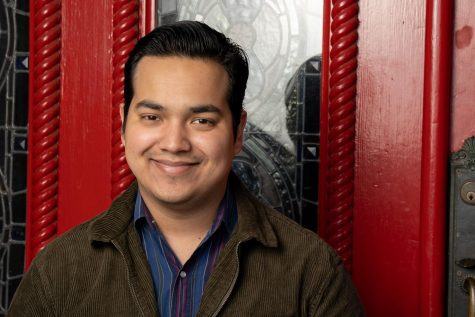The evolution of St. Edward’s and the Catholic Church since Vatican II
For St. Edward’s, the Holy Cross education has been the backbone of the institution since its founding in 1877. Throughout the university’s history, the idea of what it means to be a Catholic college student has been changed and influenced by outside variables such as politics and societal norms.
“The campus climate has changed over the years due to the work that was laid down by Campus Ministry,” said James Puglisi, Associate Director of Campus Ministry and Interfaith Director. “We have a climate where people are being mindful of our religious diversity and who’s here and how do we make sure that everybody has a place.”
The biggest change the Catholic church has undergone happened In 1965, following the global aftermath of World War II and The Holocaust. The Catholic church at that time had just finished a three year Ecumenical Council, bringing all the leadership of the church from all around the world to the vatican to discuss the church in the modern world. They called this meeting: Vatican II. The council, led by Pope John XXIII brought forth changes that the catholic church had yet to see in their history.
As a result of Vatican II, priests started celebrating mass in the language of the countries in which they lived. Making the Catholic faith a more inviting one that can be practiced worldwide.
“The church really had a fortress mentality and did not really engage well with the rest of the world in a lot of ways,” Puglisi said. “Prior to Vatican II the mentality was like, ‘You’re either us or them.’”
This new mindset ultimately transferred over to the students of St. Edward’s University throughout the years.
“Holy cross values are really taken up by all kinds of different people, it used to be the brothers that would embody those but now it’s the faculty and the way they teach,” said Director of Campus Ministry Peter J. Walsh, CSC. “Staff, administrators and students who catch on to the idea of forming hearts and educating minds really make me appreciate that part of the holy cross education.”
Puglisi who has worked for St. Edward’s for 13 years says the biggest change he has seen amongst the religious student body isn’t in “day-to-day issues,” but something deeper than that.
“There’s some intensity in certain areas but I think that’s not so much a Catholic thing but in general a higher education thing,” Puglisi said. “Y’all are bringing in a lot more things in with you, there’s a lot of students that are here now that 20 years ago wouldn’t have gone to college due to the circumstances that students are placed under today.”
As mindsets changed, so did the general population of the student body. According to the St. Edward’s website, the university deeply believes in the dignity of every person and works toward ways to uphold a safe environment that honors and respects people regardless of race, ethnicity, sexual orientation, gender identity, ability, religious and spiritual beliefs, nationality, and other important identities, experiences, and perspectives.
“The biggest difference I’ve seen is just in the diversity in the population itself,” Walsh said. “In 1952 it was an all-male university. It was probably largely white with some Hispanics, now we have people from all over the world on campus and now they are both men and women and we embrace that diversity.”
Ultimately, the Holy Cross education that St.Edward’s provides is meant to be thought-provoking, and change is only a small portion of what is to meant to happen.
“You’re in a setting that purposely engages the mind around the search for truth which is at the heart of catholic intellectual tradition,”Puglisi said. “Catholic universities are about how to lead people to truth and what is God’s truth. That doesn’t mean that there’s a Christian label placed on everything, but Catholic liberal arts education is about that exploration. It challenges what they came in with and the faith that they grew up with.”

I'm Matthew San Martin - A senior Communication major with a focus in Digital Media and Journalism and Editor-in-Chief of Hilltop Views. I served as News...






